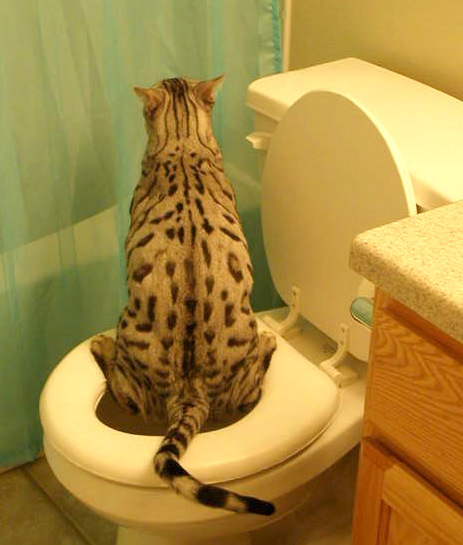Potential Risks of Flushing Cat Poop Down Your Toilet - Tips for Better Disposal
Potential Risks of Flushing Cat Poop Down Your Toilet - Tips for Better Disposal
Blog Article
Everybody will have his or her own rationale in relation to Don’t flush cat feces down the toilet.

Intro
As pet cat proprietors, it's important to bear in mind how we dispose of our feline good friends' waste. While it may seem convenient to flush cat poop down the toilet, this technique can have detrimental repercussions for both the environment and human health.
Environmental Impact
Purging feline poop introduces hazardous pathogens and bloodsuckers right into the supply of water, presenting a significant threat to aquatic ecosystems. These pollutants can negatively influence aquatic life and compromise water quality.
Health and wellness Risks
In addition to environmental problems, flushing cat waste can also pose wellness threats to human beings. Cat feces may have Toxoplasma gondii, a parasite that can create toxoplasmosis-- a potentially severe illness, particularly for expectant females and individuals with damaged immune systems.
Alternatives to Flushing
The good news is, there are safer and much more responsible means to take care of feline poop. Think about the complying with options:
1. Scoop and Dispose in Trash
The most usual approach of throwing away cat poop is to scoop it into a biodegradable bag and throw it in the garbage. Make certain to utilize a devoted clutter scoop and get rid of the waste without delay.
2. Use Biodegradable Litter
Choose biodegradable pet cat litter made from materials such as corn or wheat. These trashes are environmentally friendly and can be safely disposed of in the trash.
3. Hide in the Yard
If you have a yard, take into consideration burying cat waste in a designated location far from vegetable yards and water resources. Make certain to dig deep sufficient to stop contamination of groundwater.
4. Set Up a Pet Waste Disposal System
Invest in a pet garbage disposal system especially designed for cat waste. These systems make use of enzymes to break down the waste, reducing smell and environmental influence.
Verdict
Liable family pet possession prolongs past providing food and shelter-- it also involves appropriate waste monitoring. By avoiding purging pet cat poop down the commode and choosing different disposal approaches, we can minimize our ecological impact and secure human health and wellness.
Why Can’t I Flush Cat Poop?
It Spreads a Parasite
Cats are frequently infected with a parasite called toxoplasma gondii. The parasite causes an infection called toxoplasmosis. It is usually harmless to cats. The parasite only uses cat poop as a host for its eggs. Otherwise, the cat’s immune system usually keeps the infection at low enough levels to maintain its own health. But it does not stop the develop of eggs. These eggs are tiny and surprisingly tough. They may survive for a year before they begin to grow. But that’s the problem.
Our wastewater system is not designed to deal with toxoplasmosis eggs. Instead, most eggs will flush from your toilet into sewers and wastewater management plants. After the sewage is treated for many other harmful things in it, it is typically released into local rivers, lakes, or oceans. Here, the toxoplasmosis eggs can find new hosts, including starfish, crabs, otters, and many other wildlife. For many, this is a significant risk to their health. Toxoplasmosis can also end up infecting water sources that are important for agriculture, which means our deer, pigs, and sheep can get infected too.
Is There Risk to Humans?
There can be a risk to human life from flushing cat poop down the toilet. If you do so, the parasites from your cat’s poop can end up in shellfish, game animals, or livestock. If this meat is then served raw or undercooked, the people who eat it can get sick.
In fact, according to the CDC, 40 million people in the United States are infected with toxoplasma gondii. They get it from exposure to infected seafood, or from some kind of cat poop contamination, like drinking from a stream that is contaminated or touching anything that has come into contact with cat poop. That includes just cleaning a cat litter box.
Most people who get infected with these parasites will not develop any symptoms. However, for pregnant women or for those with compromised immune systems, the parasite can cause severe health problems.
How to Handle Cat Poop
The best way to handle cat poop is actually to clean the box more often. The eggs that the parasite sheds will not become active until one to five days after the cat poops. That means that if you clean daily, you’re much less likely to come into direct contact with infectious eggs.
That said, always dispose of cat poop in the garbage and not down the toilet. Wash your hands before and after you clean the litter box, and bring the bag of poop right outside to your garbage bins.
https://trenchlesssolutionsusa.com/why-cant-i-flush-cat-poop/

We are very taken with Can You Flush Cat Poop Down The Toilet? and I'm hoping you enjoyed the new blog entry. Make sure you take the time to share this blog if you appreciated it. Bless you for your time. Visit again soon.
Call Today Report this page